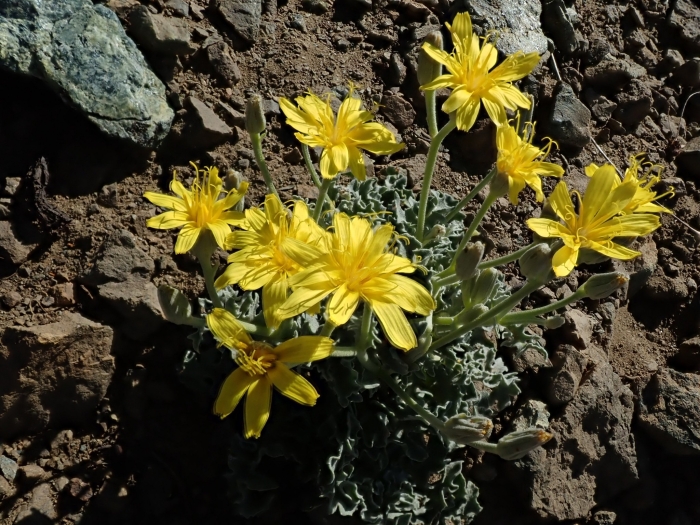Western Hawksbeard
(Crepis occidentalis)
Western Hawksbeard (Crepis occidentalis)
/
/

joergmlpts
CC BY 4.0
Image By:
joergmlpts
Recorded By:
Copyright:
CC BY 4.0
Copyright Notice:
Photo by: joergmlpts | License Type: CC BY 4.0 | License URL: http://creativecommons.org/licenses/by/4.0/ | Rights Holder: joergmlpts | Publisher: iNaturalist | Date Created: 2021-07-13T16:16:48Z |

























Estimated Native Range
Summary
Crepis occidentalis, commonly known as Western Hawksbeard or Largeflower Hawksbeard, is a perennial herb native to a variety of habitats including open woodlands, meadows, grasslands, and forest clearings across western Canada and the United States. It typically grows to a height of up to 16 inches (40 cm) and is characterized by its grayish woolly stem and basal leaves that are woolly and toothed. The plant produces clusters of bright yellow ray florets in the inflorescence, which bloom from late spring to early summer and are quite showy, attracting pollinators such as bees and butterflies.
Western Hawksbeard is valued in cultivation for its bright, cheerful flowers and its adaptability to various garden settings, including wildflower gardens and naturalized areas. It is relatively low-maintenance, requiring minimal care once established. This plant prefers full sun to partial shade and thrives in well-drained soils. While it is drought-tolerant once established, moderate watering will encourage more abundant blooms. It is propagated from seed, which is the preferred method due to its deep taproot that makes division or transplantation difficult. Gardeners should be aware that in some conditions, it can self-seed and become somewhat aggressive, though it is not generally considered invasive.CC BY-SA 4.0
Western Hawksbeard is valued in cultivation for its bright, cheerful flowers and its adaptability to various garden settings, including wildflower gardens and naturalized areas. It is relatively low-maintenance, requiring minimal care once established. This plant prefers full sun to partial shade and thrives in well-drained soils. While it is drought-tolerant once established, moderate watering will encourage more abundant blooms. It is propagated from seed, which is the preferred method due to its deep taproot that makes division or transplantation difficult. Gardeners should be aware that in some conditions, it can self-seed and become somewhat aggressive, though it is not generally considered invasive.CC BY-SA 4.0
Plant Description
- Plant Type: Herb
- Height: 1-3 feet
- Width: 1-2 feet
- Growth Rate: Moderate
- Flower Color: Yellow
- Flowering Season: Spring, Summer
- Leaf Retention: Deciduous
Growth Requirements
- Sun: Full Sun, Part Shade
- Water: Low
- Drainage: Fast, Medium, Slow
Common Uses
Butterfly Garden, Erosion Control, Low Maintenance
Natural Habitat
Open woodlands, meadows, grasslands, and forest clearings
Other Names
Common Names: Big Hawksbeard, Gray Hawk’s-Beard, Large-Flower Hawk’s-Beard, Grey Hawksbeard
Scientific Names: , Crepis occidentalis, Crepis occidentalis var. occidentalis,
GBIF Accepted Name: